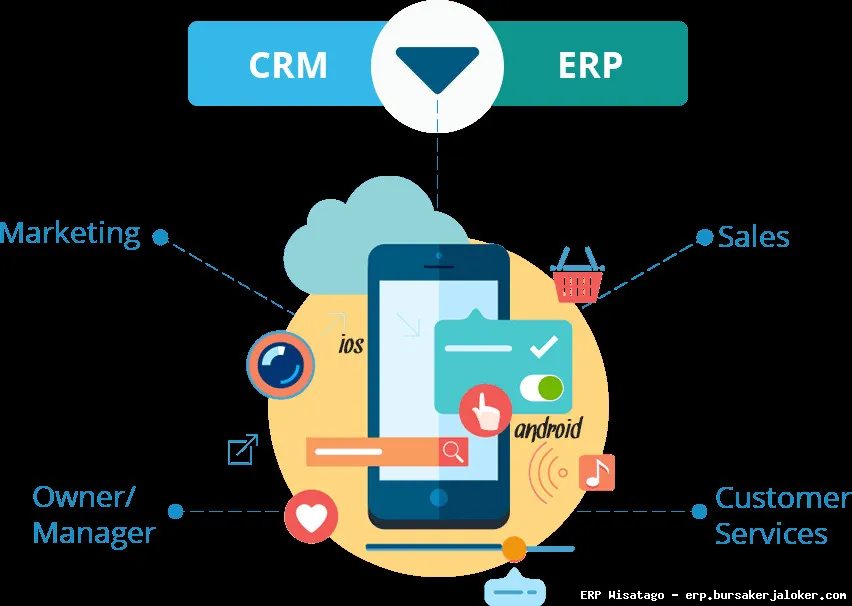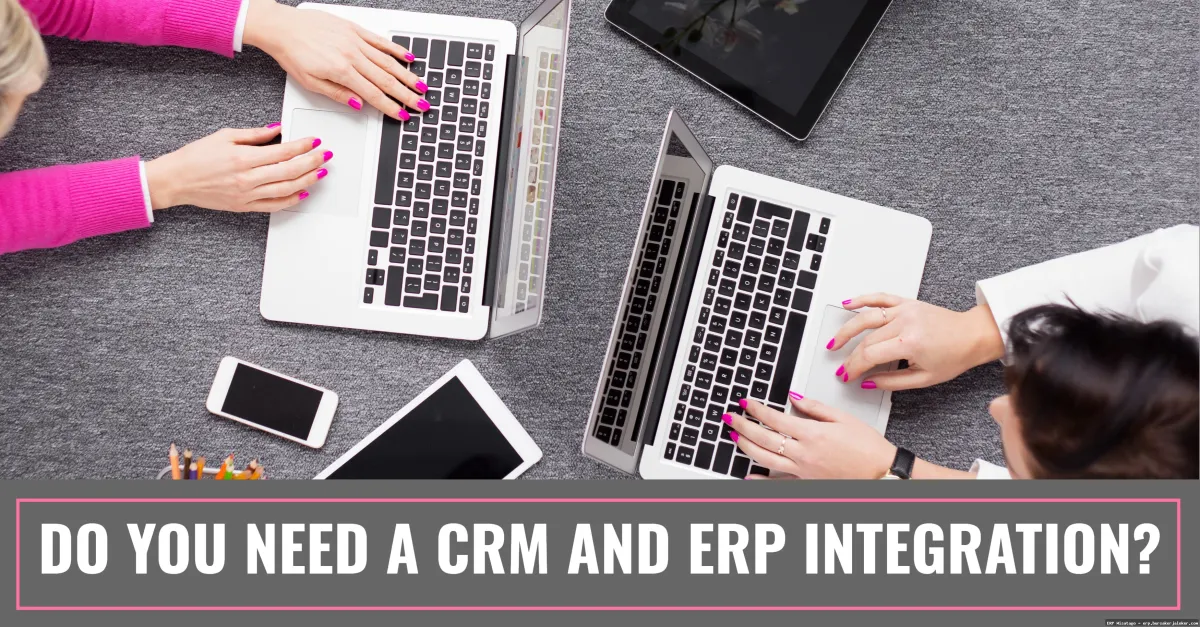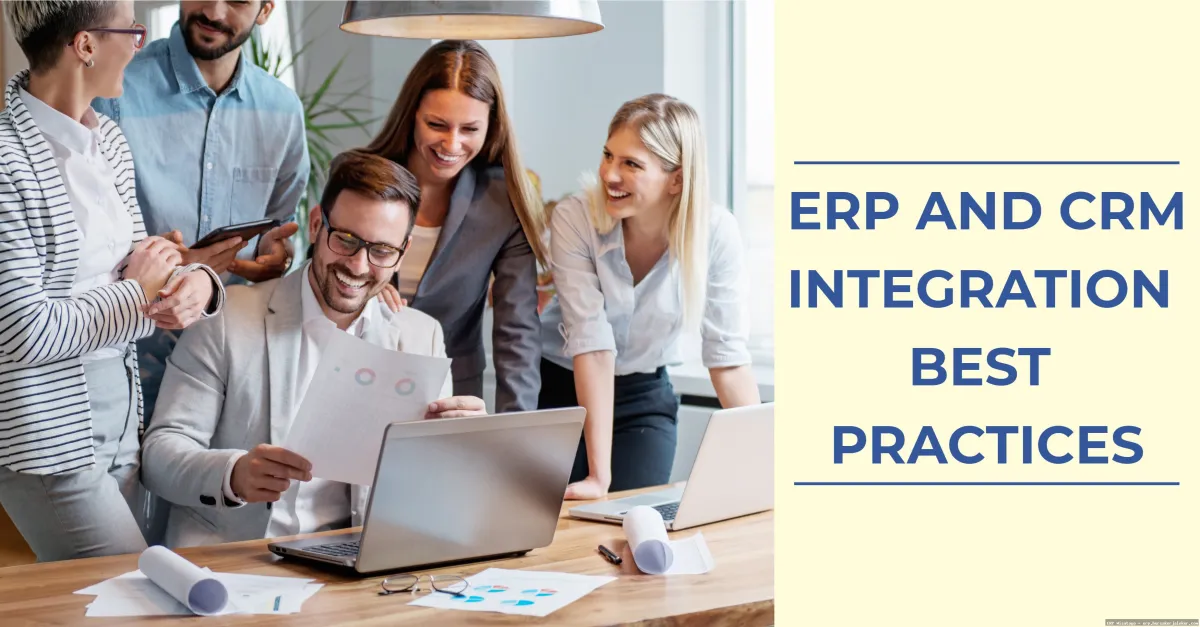In today’s fast-paced business environment, data is king. But simply having data isn’t enough. It’s about how effectively you can collect, analyze, and leverage that data to make informed decisions, improve efficiency, and ultimately, drive growth. That’s where the integration of Enterprise Resource Planning (ERP) and Customer Relationship Management (CRM) systems comes into play. It’s more than just connecting two software platforms; it’s about creating a unified view of your business, from the factory floor to the customer’s doorstep.
Having worked with and implemented ERP systems in various organizations, I’ve witnessed firsthand the transformative power of integrating ERP and CRM. The initial investment might seem daunting, and the implementation process can certainly present challenges. However, the long-term benefits – improved operational efficiency, enhanced customer satisfaction, and a clearer picture of your business performance – far outweigh the initial hurdles. This isn’t just about technology; it’s about fundamentally changing the way your business operates and interacts with its customers.

This guide will delve into the intricacies of ERP with CRM integration, exploring its features, benefits, and the critical considerations for successful implementation. We’ll look at real-world examples, discuss common pain points, and provide practical advice to help you navigate the complex landscape of ERP and CRM solutions. Whether you’re a small business owner considering your first ERP system or a seasoned executive looking to optimize your existing infrastructure, this guide will provide you with the knowledge and insights you need to make informed decisions and unlock the full potential of your business.
ERP With CRM Integration: Complete Guide, Features and Details
ERP and CRM systems, while distinct in their primary functions, are inherently interconnected. ERP focuses on internal operations, managing resources like inventory, finance, and human resources. CRM, on the other hand, centers on customer interactions, sales, marketing, and customer service. Integrating these two systems bridges the gap between internal operations and external customer relationships, creating a seamless flow of information across the entire organization.
What is ERP?
Enterprise Resource Planning (ERP) is a comprehensive software suite designed to manage and integrate various business functions. Think of it as the central nervous system of your organization, connecting different departments and processes into a single, unified system. Key modules typically include:
- Finance: General ledger, accounts payable/receivable, budgeting, and financial reporting.
- Manufacturing: Production planning, inventory management, shop floor control, and bill of materials.
- Supply Chain Management (SCM): Procurement, order management, warehousing, and logistics.
- Human Resources (HR): Payroll, benefits administration, employee management, and talent acquisition.
- Project Management: Project planning, resource allocation, and cost tracking.
The core principle of ERP is to provide a single source of truth for all business data, eliminating silos and improving decision-making. By automating processes and centralizing information, ERP systems streamline operations, reduce costs, and improve efficiency. Effective IT management often relies on robust tools, with RMM playing a crucial role in monitoring and maintaining systems
.
What is CRM?
Customer Relationship Management (CRM) focuses on managing and improving interactions with customers and prospects. It’s all about understanding your customers, building strong relationships, and providing exceptional service. Key features of a CRM system include:
- Sales Force Automation (SFA): Lead management, opportunity tracking, sales forecasting, and contact management.
- Marketing Automation: Email marketing, campaign management, lead nurturing, and marketing analytics.
- Customer Service: Case management, knowledge base, ticketing system, and customer support portals.
- Analytics and Reporting: Customer segmentation, sales performance analysis, and marketing ROI tracking.
CRM systems empower businesses to personalize customer interactions, improve customer satisfaction, and drive sales growth. By centralizing customer data and automating key processes, CRM helps businesses build stronger relationships and deliver exceptional customer experiences.
Benefits of ERP and CRM Integration
The synergy created by integrating ERP and CRM systems unlocks a multitude of benefits for businesses of all sizes. Here are some of the most significant advantages:
Improved Data Visibility and Accuracy
Integration eliminates data silos and provides a 360-degree view of the customer. Sales teams can access real-time inventory data from the ERP system to provide accurate lead times and product availability information to customers. Customer service representatives can view order history and financial information from the ERP system to resolve issues more effectively. This unified view of data improves accuracy and reduces errors, leading to better decision-making across the organization.
Enhanced Sales Performance
With access to real-time inventory, pricing, and production data from the ERP system, sales teams can close deals faster and more efficiently. They can provide accurate quotes, track orders in real-time, and proactively address potential issues. Marketing teams can use customer data from the CRM system to personalize marketing campaigns and target the right customers with the right message. This leads to increased sales conversions, higher customer lifetime value, and improved overall sales performance.
Streamlined Operations and Reduced Costs
Integration automates many manual processes, such as order entry, invoicing, and inventory management. This reduces the need for manual data entry, minimizes errors, and frees up employees to focus on more strategic tasks. By streamlining operations and improving efficiency, integration can significantly reduce costs and improve profitability.
Improved Customer Service and Satisfaction
Customer service representatives can access a complete view of the customer’s history, including past orders, interactions, and preferences. This allows them to provide personalized service and resolve issues quickly and effectively. By providing a seamless and consistent customer experience, integration can significantly improve customer satisfaction and loyalty.
Better Forecasting and Planning
Integration provides a comprehensive view of sales trends, customer demand, and inventory levels. This allows businesses to make more accurate forecasts and plan their operations more effectively. By aligning production with demand and optimizing inventory levels, integration can minimize waste, reduce costs, and improve profitability.
Key Features of ERP and CRM Integration
A successful ERP and CRM integration goes beyond simply connecting two systems. It involves carefully mapping data fields and workflows to ensure a seamless flow of information between the two platforms. Here are some key features to look for in an integrated solution:
Real-time Data Synchronization
Data should be synchronized between the ERP and CRM systems in real-time, ensuring that all users have access to the most up-to-date information. This eliminates the need for manual data entry and reduces the risk of errors.

Automated Workflows
Workflows should be automated to streamline processes and improve efficiency. For example, when a new order is placed in the CRM system, it should automatically be transferred to the ERP system for fulfillment.
Customizable Dashboards and Reports
Dashboards and reports should be customizable to provide users with the information they need to make informed decisions. Users should be able to track key metrics, such as sales performance, customer satisfaction, and inventory levels.
Mobile Access
Users should be able to access the integrated system from their mobile devices, allowing them to stay connected and productive even when they are on the go.
Role-Based Security
Security should be role-based, ensuring that users only have access to the information they need to perform their jobs. This protects sensitive data and prevents unauthorized access.
Choosing the Right ERP and CRM Integration Solution
Selecting the right ERP and CRM integration solution is a critical decision that can significantly impact your business. Here are some key factors to consider:
Business Needs and Requirements
Start by clearly defining your business needs and requirements. What are your pain points? What processes do you want to streamline? What information do you need to access? Understanding your specific needs will help you narrow down your options and choose a solution that meets your unique requirements.
Scalability and Flexibility
Choose a solution that can scale with your business as it grows. The system should be flexible enough to adapt to changing business needs and integrate with other applications.
Integration Capabilities
Ensure that the ERP and CRM systems you choose are compatible and offer seamless integration capabilities. Look for pre-built integrations or APIs that allow you to connect the two systems easily.
Vendor Reputation and Support
Choose a reputable vendor with a proven track record of success. Make sure the vendor offers excellent customer support and training to help you implement and use the system effectively.
Cost and ROI
Consider the total cost of ownership, including software licenses, implementation costs, and ongoing maintenance fees. Evaluate the potential ROI of the integration by considering the potential benefits, such as increased sales, reduced costs, and improved customer satisfaction.
Common Challenges and How to Overcome Them
Implementing ERP and CRM integration can be a complex undertaking, and there are several common challenges that businesses may encounter. Here are some of the most common challenges and how to overcome them:
Data Migration
Migrating data from legacy systems to the new integrated system can be a complex and time-consuming process. Ensure you have a well-defined data migration plan and allocate sufficient resources to the task. Consider using data migration tools to automate the process and minimize errors.
User Adoption
Getting users to adopt the new system can be a challenge, especially if they are used to working with legacy systems. Provide comprehensive training and support to help users understand the benefits of the new system and how to use it effectively. Emphasize the positive impact on their daily tasks and responsibilities.
Integration Complexity
Integrating ERP and CRM systems can be complex, especially if the two systems are not designed to work together. Choose systems with pre-built integrations or APIs to simplify the integration process. Work with experienced consultants to ensure a smooth and successful integration.

Change Management
Implementing ERP and CRM integration often requires significant changes to business processes. Develop a comprehensive change management plan to address potential resistance and ensure a smooth transition. Communicate the benefits of the integration clearly and involve employees in the planning process.
Conclusion
ERP and CRM integration is a powerful tool that can transform your business. By breaking down data silos, streamlining operations, and improving customer relationships, integration can help you achieve significant gains in efficiency, profitability, and customer satisfaction. While the implementation process can be challenging, the long-term benefits far outweigh the initial hurdles. By carefully planning your integration, choosing the right solution, and addressing potential challenges proactively, you can unlock the full potential of your business and achieve sustainable growth.
Frequently Asked Questions (FAQ) about ERP with CRM integration
What are the key benefits of integrating my ERP (Enterprise Resource Planning) system with my CRM (Customer Relationship Management) software, and is it worth the investment?
Integrating your ERP and CRM systems offers numerous benefits that can significantly improve business operations. A key advantage is enhanced data visibility across departments, providing a 360-degree view of the customer. This allows sales, marketing, and customer service teams to access real-time information on order history, inventory levels, and customer interactions, enabling more personalized and effective communication. Furthermore, integration streamlines processes like order fulfillment, invoicing, and lead management, reducing manual data entry and minimizing errors. This improved efficiency leads to cost savings and increased productivity. Ultimately, while integration involves an initial investment, the long-term benefits of improved customer satisfaction, streamlined operations, and better decision-making typically outweigh the costs, making it a worthwhile investment for many businesses.
How do I choose the right ERP and CRM integration approach for my business, considering factors like cloud-based vs. on-premise systems and the size of my company?
Selecting the right ERP and CRM integration approach requires careful consideration of several factors. First, evaluate whether your systems are cloud-based or on-premise. Cloud-based systems often offer simpler integration options through APIs and pre-built connectors. On-premise systems may require more complex custom integrations. The size of your company is also crucial. Smaller businesses might benefit from simpler, out-of-the-box integrations, while larger enterprises with complex needs may require a more customized solution. Consider the level of data synchronization required; a simple integration might suffice for basic data sharing, while a deeper integration is needed for real-time updates and automated workflows. Finally, assess your budget and technical expertise. Factor in implementation costs, ongoing maintenance, and the availability of internal resources to manage the integration. Consulting with an experienced integration partner can provide valuable insights and guidance.
What are some common challenges encountered during ERP and CRM integration, and how can I mitigate these challenges to ensure a successful project?
ERP and CRM integration projects can face several challenges. One common issue is data incompatibility between the two systems, requiring data mapping and transformation to ensure data accuracy. Another challenge is resistance to change from employees who are accustomed to working with separate systems. Lack of a clear integration strategy and defined goals can also lead to scope creep and project delays. To mitigate these challenges, it’s crucial to develop a well-defined integration plan with clear objectives and measurable outcomes. Involve key stakeholders from both the ERP and CRM teams in the planning process to ensure buy-in and address potential concerns. Invest in thorough data cleansing and validation to minimize errors. Provide adequate training to employees on the new integrated system. Finally, consider a phased implementation approach to minimize disruption and allow for adjustments along the way. Regular communication and monitoring are essential for a successful integration.
